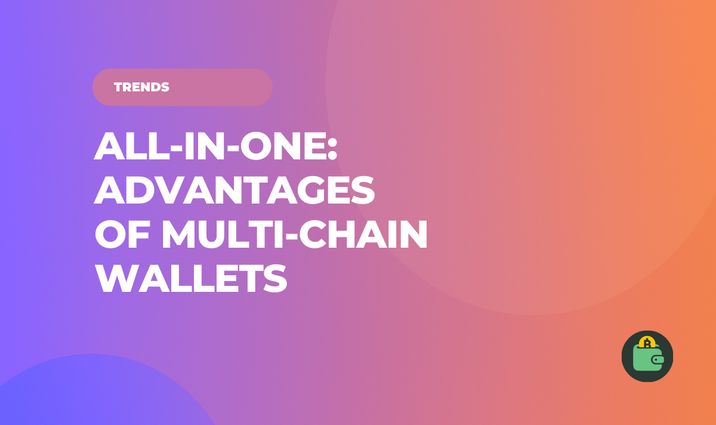One Wallet, Many Chains: The Growth of Multi-Chain Solutions

Multi-chain wallets are not only the modern and convenient solution for your assets but also the latest trend in the crypto market. According to Market Report Analytics, the global non-custodial wallet market is expected to be valued at around USD 3 billion in 2025, with projections to reach USD 10 billion by 2028 at a compound annual growth rate (CAGR) of around 25%. The total number of active non-custodial wallet users is estimated to have surpassed 50 million globally. So if you still have your doubts and don't have a non-custodial wallet, this article is for you.
Support for New Protocols and Networks
Multi-chain non-custodial wallets have been growing in popularity because they support multiple cryptocurrencies. More and more wallets are working to support new protocols. For example, Phantom Wallet added support for Layer 1 Sui during its latest multi-chain expansion in 2025. MetaMask, which had long worked only within the Ethereum ecosystem, developed the Snaps plugin system to connect with other networks — including Solana, Cosmos, and Bitcoin.
Three months ago, Coin Wallet also added WalletConnect, an open protocol that enables cryptocurrency users to connect Coin Wallet to decentralized applications (DApps) via URI links or QR codes.
The Integration of AI and Blockchain
Artificial intelligence (AI) in multi-chain non-custodial wallets is being used to enhance security, user experience, and asset management. For example, AI assistants can detect suspicious activity, such as unusual transactions or phishing attempts, and help users navigate the wallet interface, interpret transaction details, and manage assets. Just as Spotify recommends music, AI can suggest interesting or useful decentralized applications.
Biometric Authentication
This is the latest popular trend in the crypto sphere. Some experts even believe that Face ID and Touch ID could replace the outdated and inconvenient seed phrase model. For example, in Coin Wallet, biometric authentication is an optional feature and primarily a mobile function: you can use a 4-digit PIN or biometrics for quick and secure access to your wallet. Find out how it works in our latest article.
User-Friendly Interface and Super-Apps
More and more wallets are turning into universal "super-apps". Wallets are now integrating features directly into their interfaces that previously required external dApps — such as built-in token exchange, staking, NFT viewing, and more. Coin Wallet supports not only sending and receiving but also swapping, staking, and buying with Visa and Mastercard. This increases user retention and makes interactions seamless.
Mobile and Web Solutions
Mobile wallets are playing an increasingly prominent role in the global proliferation of cryptocurrencies. In regions with high smartphone penetration, many users are first introduced to Web3 through a wallet's mobile app.
Custodial wallets usually have limited access to decentralized applications: you can’t directly connect to a DeFi protocol or NFT marketplace from an exchange account (although exceptions are starting to appear, they often come with limitations). A non-custodial wallet, on the other hand, is a gateway to the entire Web3 ecosystem. Only by having a multi-chain wallet can a user interact with DeFi platforms (DEXs, lending, farming), collect NFTs, vote in DAOs, and perform other on-chain activities.
Global Adoption Growth
Global surveys confirm the trend of growing self-custody adoption. According to a ConsenSys survey, key ownership has become one of the most important criteria when choosing a cryptocurrency wallet — one-third of respondents listed choosing a non-custodial option as one of their main decision factors.
Security
In a non-custodial wallet, the user has full control over their private keys — the well-known principle of “not your keys, not your coins”. This means greater freedom and autonomy — but also personal responsibility for keeping access secure.
A non-custodial approach eliminates the risk of a centralized custodian being hacked or going bankrupt. Funds held locally cannot be frozen or stolen from an exchange. Almost all major thefts have occurred on custodial platforms: in just one month in 2024, hackers stole $120 million from centralized exchanges and services.
The Bottom Line
To summarize, in 2025, there is a clear shift in the balance toward non-custodial multi-chain wallets as the preferred tool for active participation in the crypto ecosystem. Improvements in security and convenience have made self-custody more attractive, while market events have eroded unquestioned trust in centralized players.
Custodial wallets still have a role to play — primarily as an easy entry point for newcomers and an essential piece of infrastructure for large investors — but the industry’s course is shifting to a model where the user owns their own keys.
Self-custody is the future.